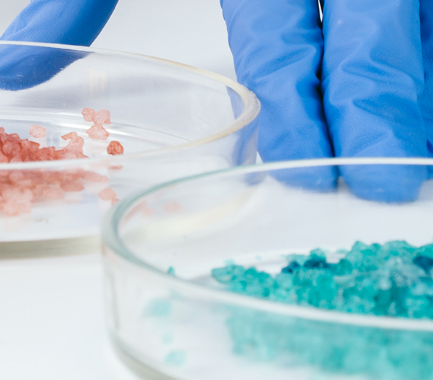Your contact
PENPET-Team - Hamburg

Christoph Meister
Sales
Tel. +49 (0) 40 - 675 7 99 30
sales@penpet.de
Get in touch with us.
Calcium formate
Calcium formate, as the calcium salt of formic acid, belongs to the formate group of substances. The compound is an important intermediate for the chemical industry and is also used in various technical applications. The substance occurs naturally in the form of the rare mineral formicaite. The large-scale production of calcium formate is based on the reaction of calcium hydroxide and carbon monoxide. Alternatively, the substance can be made from calcium compounds and formaldehyde.
Calcium formate is a raw material for the industrial synthesis of formic acid and other compounds. It is also used as a lubricant for machines, as a binder for cement and other building materials, as an aid in textile processing and in the production of animal feed.
At PENPET you get calcium formate of the highest quality - from a reliable partner who will also meet your requirements in the long term. We look forward to receiving your inquiry for an individual offer. Prompt delivery of the solid can be made as a crystalline powder in packages of various weights.
CAS no. 544-17-2
EINECS no. 208-863-7
Molecular formula: C2H2CaO4
Synonyms: Calcium formate, calcium methanoate, calcium diformate, E 238
Areas of application: Starting material for organic syntheses, use as a lubricant and setting accelerator, auxiliary agent in leather processing, additive for pet food
More Information
Calcium formate is a salt whose molecules are made up of two positively charged calcium ions and two negatively charged formate ions. These represent the acidic residue of formic acid after the hydrogen proton has been split off from its carboxyl group. The crystals of the calcium salt of formic acid have a rhombic structure and are anhydrous. Upon contact with water, the salt dissociates into an aqueous solution of its ions.
When stored in a dry place, calcium formate is a colorless to yellowish-white, crystalline solid. The compound exhibits a faint odor reminiscent of caramel. The salt does not melt even with strong heating, but decomposes at temperatures above 380 °C. The compound is easily soluble in water. Calcium formate is practically insoluble in ethanol.
Calcium formate is a chemically stable salt. Upon contact with water or moisture, the crystals turn into an aqueous solution. To prevent dangerous reactions, the substance should be kept away from strong acids and oxidizing agents.
In its pure form, calcium formate is not flammable. However, the whirling up of fine particles can form flammable and explosive dust-air mixtures with the ambient air. When processing open containers of the substance, care must be taken to ensure sufficient distance from sources of ignition such as hot surfaces, electrical discharges, mechanically generated sparks and open flames. The thermal decomposition of calcium formate produces acrid and harmful gases. Among other things, carbon monoxide, carbon dioxide and calcium oxide smoke are released.
According to the GHS classification, calcium formate is a corrosive hazardous substance. On the skin, the compound usually causes only mild irritation, redness and swelling. Affected parts of the body can be rinsed under running water and cleaned of salt residues. On the other hand, if the salt or the aqueous solution comes into direct contact with the eye, severe irritation and chemical burns can occur, which impair vision. The eye should be rinsed immediately and thoroughly with running water. Ophthalmological treatment must then be arranged.
If particles of the substance are inhaled, irritation of the respiratory tract is to be expected. Ingestion of calcium formate can lead to gastrointestinal symptoms such as nausea, vomiting and diarrhea. If the compound is absorbed into the metabolism, disorders of the central nervous system such as drowsiness, weakness, headache and unconsciousness as well as breathing difficulties can occur. After rinsing the mouth, drink water to dilute the ingested substance. A medical examination for possible symptoms of poisoning should then be carried out.
Calcium formate is considered to be slightly hazardous to water. To protect aquatic organisms, the compound should not be allowed to enter soil, water courses or drains. In case of leakage of significant quantities into the environment, inform local authorities. Calcium formate is not subject to any special transport regulations.
